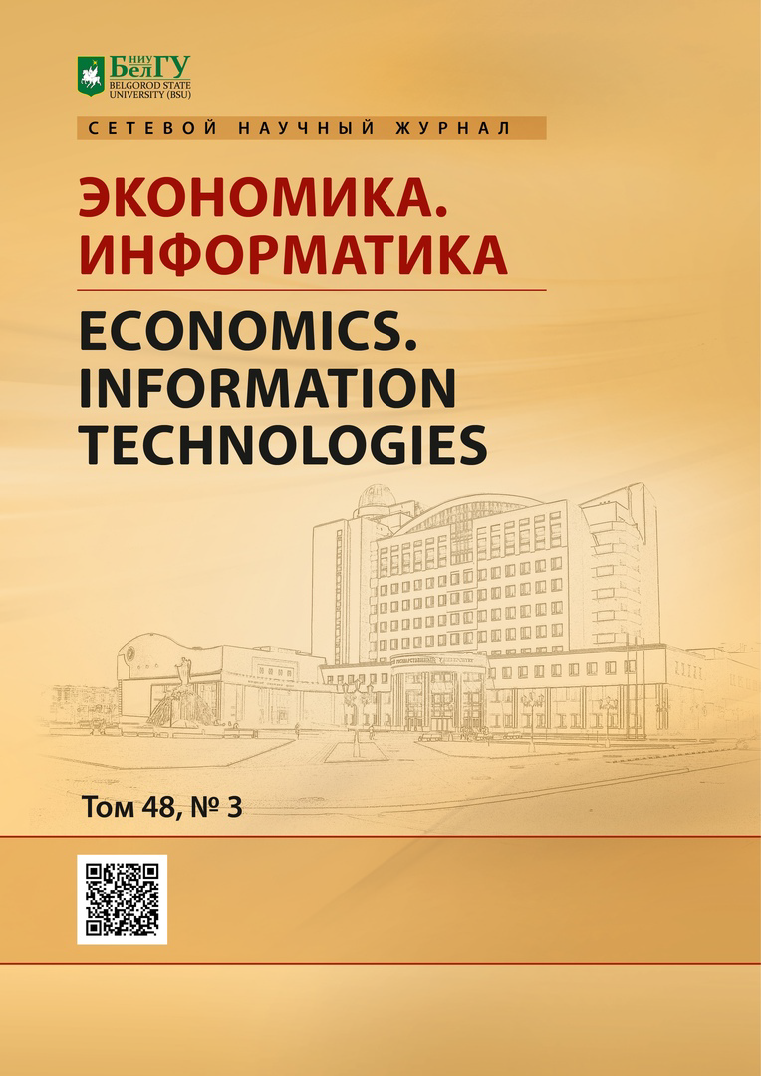Vaccination against COVID-19: behavioral economics models
DOI:
https://doi.org/10.52575/2687-0932-2021-48-3-487-494Keywords:
behavioral economics, mathematical model, vaccination, consumerAbstract
The problem of choice plays an important role in the life of a modern person. Currently, behavioral economics is viewed as a qualitatively positive component applied to the accompanying traditional theory of consumer behavior. This is due to the fact that with the help of behavioral economics, it is possible to explain various contradictory ways of performing certain actions that underlie the choices and judgments of people and cannot be explained by classical economics. In this article, behavioral economics applies well to the pharmaceutical field, specifically to issues related to vaccination in the context of COVID-19. However, despite the fact that the pharmaceutical field is a very fertile ground for research in the field of behavioral economics, research on consumer behavior in the context of coronavirus infection is practically absent. In this paper, we have tried to consider the different perspectives associated with the application of behavioral economics approaches and making decisions about vaccination. The research was carried out using econometrics and mathematical methods. In this regard, the purpose of this study is to explain consumer behavior on issues related to vaccination and to build a mathematical model. This article looks at answers to questions such as behavioral economics can prevent the spread of a pandemic. Provides insight into why compliance is tedious for the consumer and what benefits vaccination can bring to consumers. The paper provides a broad overview showing how behavioral economics strategies can influence and be implemented in various areas of the pharmaceutical field. As a result of the study, the main trends affecting consumer behavior during vaccination were identified and a mathematical model of consumer choice associated with vaccination against COVID-19 was described. The results obtained contribute to the development of behavioral economics in extreme situations.
Downloads
References
Ариели Д. 2013. Поведенческая экономика. Почему люди ведут себя иррационально и как заработать на этом. М.: Манн, Иванов и Фербер, 296 с.
Важенина Д.А., Мельникова О.А. 2019. Изучение потребительских предпочтений при вы-боре препаратов для купирования головной боли. В сборнике: Современная мировая экономика: проблемы и перспективы в эпоху развития цифровых технологий и биотехнологии. Сборник научных статей по итогам работы девятого международного круглого стола, 206–208.
Решетнева А.С., Мельникова О.А. 2019. Маркетинговые исследования посетителей аптек г. Екатеринбурга. В сборнике: Молодежь – практическому здравоохранению XIII Всероссийская с международным участием научная конференция студентов и молодых ученых-медиков, 360–362.
Талер Р. 2017. Новая поведенческая экономика. Почему люди нарушают правила традиционной экономики и как на этом заработать. М.: Эксмо, 368 с.
Abaluck J., Gruber J. 2011. Choice inconsistencies among the elderly: Evidence from plan choice in the medicare Part D program. American Economic Review, 101 (4): 1180–1210.
Ariely D., Loewenstein G., Prelec D. 2003. “Coherent arbitrariness”: stable demand curves without stable preferences. Quarterly Journal of Economics, 118 (1): 73–105.
Blaug M. 1995. Economic theory in retrospect. Cambridge University press, 633 p.
Camerer C.F., Loewenstein G., Rabin M. 2004. Advances in behavioral economics. Russell Sage Foundation, 51 p.
Chetty R. 2015. Behavioral economics and public policy: a pragmatic perspective. The American Economic Review, 105: 1–33.
Douma S.W., Schreuder H. 2012. Economic approaches to organizations. Pearson Education, 282 p.
Elrod T., Keane M. 1995. A factor-analytic probit model for representing the market structure in panel data. Journal of Marketing Research, 32 (1): 1–16.
Erdem T., Keane M. 1996. Decision making under uncertainty: Capturing dynamic brand choice processes in turbulent consumer goods markets. Marketing Science, 15 (1): 1–20.
Erdem T., Keane M., Sun B. 2008. A dynamic model of brand choice when price and advertising signal product quality. Marketing Science, 27 (6): 1111–1125.
Fang H., Keane M., Silverman D. 2008. Sources of advantageous selection: Evidence from the medigap insurance market. Journal of Political Economy, 116 (2): 303–350.
Frank R. 2007. Behavioral economics and health economics, Diamond, Vartiainen (Eds.), Behavioral Economics and Its Applications, Princeton Univ. Press, Princeton, NJ, 195–234.
Houser D., Keane M., McCabe K. 2004. Behavior in a dynamic decision problem: an analysis of experimental evidence using a Bayesian type classification algorithm. Econometrica, 72: 781–822.
McAuley I. 2010. When does behavioral economics really matter? Paper to accompany presentation to behavioral economics stream at Australian Economic Forum.
Laibson D., List J.A. 2015. Principles of (behavioral) economics. The American Economic Re-view, 105: 385–390.
Abstract views: 362
Share
Published
How to Cite
Issue
Section
Copyright (c) 2021 ECONOMICS. INFORMATION TECHNOLOGIES

This work is licensed under a Creative Commons Attribution 4.0 International License.


